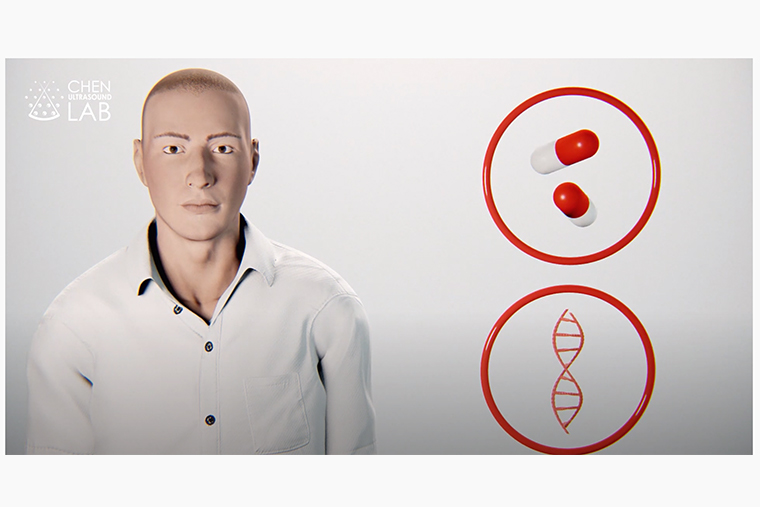
Brain tumors are typically diagnosed using MRI imaging because taking a sample for a tissue biopsy is risky and may not be possible due to tumor location or a patient's poor health conditions. Researchers at Washington University in St. Louis are developing a method to diagnose brain tumors without any incisions.
The method is developed by a team led by Hong Chen, assistant professor of biomedical engineering at the McKelvey School of Engineering and of radiation oncology at the School of Medicine. It uses ultrasonic energy to target tumors deep in the brain. Once located, the researchers inject microbubbles into the blood that travel to the ultrasound-targeted tissue, then pop, causing small tears of the blood-brain barrier. The ruptures allow biomarkers, such as DNA, RNA and proteins, from the tumor to pass through the blood-brain barrier and release into the blood, which can be tested with a blood draw, called a liquid biopsy.

Chen and the team have been working on their focused ultrasound-enabled liquid biopsy (FUS-LBx) method for several years, conducting a feasibility study first in mice, followed by a safety evaluation study also in mice, and most recently, another study in young pigs, which have a similar skull thickness as humans. While blood-based liquid biopsy has been used in human patients with other cancers for personalized medicine, extending the method to brain cancer in humans remains challenging. Chen recently received a four-year $2.5 million grant from the National Institute of Biomedical Imaging and Bioengineering at the National Institutes of Health (NIH) to pursue the study further.
In a study published in Scientific Reports on May 4, the team reported success in measuring two brain-specific biomarkers using FUS-LBx in seven of the eight pigs they used. They found no brain tissue damage in the pigs after the procedure.
"MRI only provides anatomic information about the brain tumor," said Chris Pacia, a third-year doctoral student in biomedical engineering and first author of the study. "FUS-LBx may be integrated into future clinical practice as a complement to MRI and tissue biopsies to provide molecular information of the tumor."
"The potential impact of this technique could be huge, and not just for brain tumor diagnosis," Chen said. "This method could be applied to the diagnosis of other brain diseases."
Chen said the team wants to do more studies to better understand and optimize the technology as it prepares for clinical trials in humans.
"Our long-term goal is to transform the clinical management of patients with brain cancer by providing molecular signatures of the disease using noninvasive FUS-LBx," Chen said. "Research with the new funding has the potential to radically advance the diagnosis and monitoring of brain cancer patients without surgery."
This project has been a team effort among multiple departments within Washington University. Chen has been collaborating with Eric Leuthardt, MD, director of the Division of Neurotechnology and of the Center for Innovation in Neuroscience and Technology and professor of neurosurgery and of neuroscience at the School of Medicine, as well as of biomedical engineering and of mechanical engineering and applied science at the McKelvey School of Engineering. In addition, Chen has worked with Gavin Dunn, MD, PhD, associate professor of neurological surgery, of neurology and of pathology and immunology at the School of Medicine; Allegra Petti, assistant professor in the Department of Medicine's Division of Oncology; Aadel Chaudhuri, MD, PhD, assistant professor of radiation oncology at the School of Medicine; H. Michael Gach, associate professor of radiation oncology; Michael Talcott, DVM, director of veterinary surgical services in the Division of Comparative Medicine; and Xiaowei Wang at the University of Illinois at Chicago on this project.






